
Fearless Dauntless: USN' legendary dive bomber
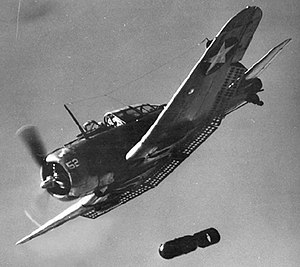
The image is clear now, since the river of history went by, nearly 80 years ago. On 4 June 1942, in a remote corner of the Pacific with no land in sight for hundred of miles, an epic clash turned the tide of the pacific war. It has been told and retold as such, and books tried to moderate the claim, but in the end it still stands strong. No battle was so decisive in its long-term effect. And it was a complex one, with a grand Japanese strategy, a desperate US Navy hang by its fingernails to its last aircraft carriers... and hundreds of courageous pilots. Among these, none but those onboard a handful of Douglas SBD Dauntless had such decisive action at Midway.
The Douglas Dauntless is fondly remembered until now, in particular for this battle. When introduced in 1940 it presented a set of precious qualities: It as an excellent naval scout plane, accurate dive bombing characteristics, long range, good manoeuvrability, defensive armament, and ruggedness. The U.S. Army Air Force equally loved it, and it was also adopted as the A-24 Banshee. In the end, it out-shined its designated replacement, the Curtiss Helldiver. Probably as much because of its historical significance and role during the crucial years of 1942-43, but because of the problems of its designated replacement. The battle of Midway was certainly not the most important in scale, nor the last, and it would take the long grinding match of Guadalcanal to really take the decision and eliminate the Kido Butai -still the best naval air force at the time- for good. During all this time, the Dauntless was there, hammering the Imperial Japanese Navy until its overdue retirement in 1945. It was also mass produced to an extent of nearly 6,000 until 1944, still flying in the late 1950s.
Development of the Douglas SBD (1939-40)
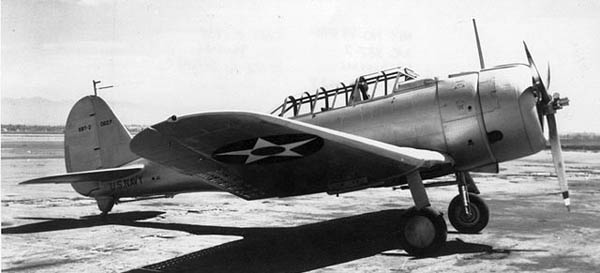
Northrop XBT-2 in 1937. Its airframe was a production Northrop BT-1, but it was heavily modified and redesignated by Douglas XSBD-1.
As we saw in the preceding article, the Douglas Dauntless was basically an evolution of the 1935 Northrop BT. As in 1937, the Northrop Corporation was taken over by Douglas, its local projects went on under Douglas supervision (Jack Northrop meanwhile created his own company). BT-1 modifications asked by the Navy from November 1937 made the basis for the BT-2, later standardized as the SBD. Eventually this model entered service in mid-1939, with the team in charge considered it could be improved.

Northrop BT. Despite its deficiencies, it was still in service in 1942.
Ed Heinemann's team of designers wanted to fit to the BT-2 a 1,000 hp (750 kW) Wright Cyclone. The new model was developed at the same El Segundo plant in California, and the latter started production of the SBD-1. However that facility was soon found too cramped for a mass production, so Douglas Oklahoma City plant came in line for mass production which was setup in 1940. The latter in fact built almost all the SBDs in wartime.
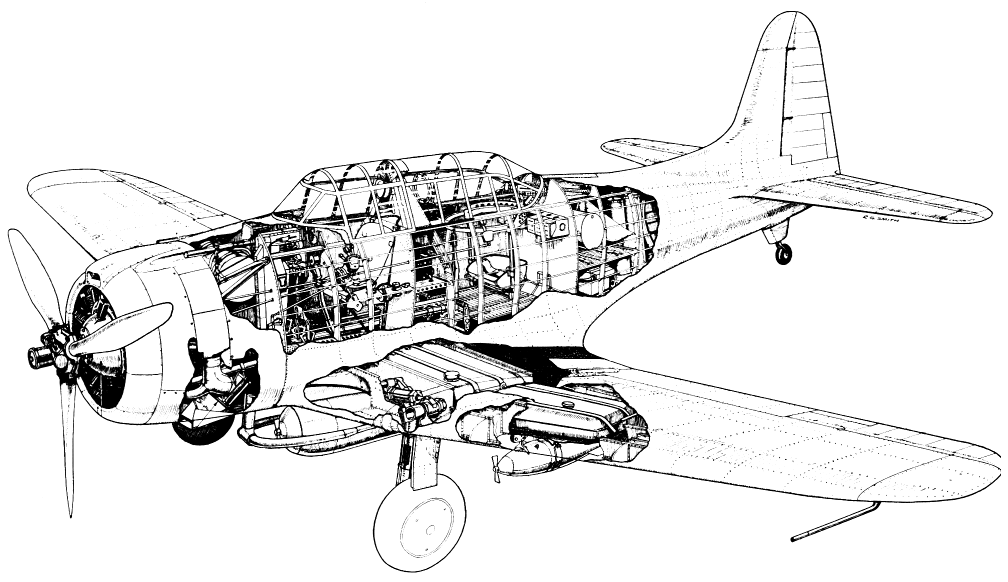

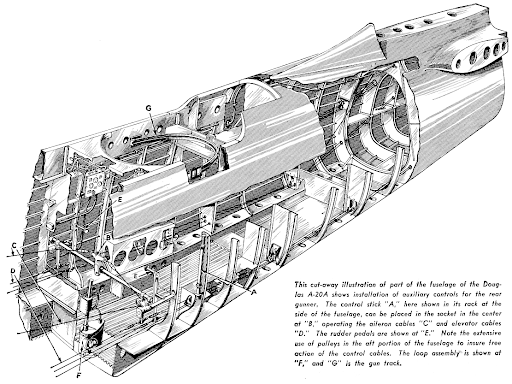
Cutaways of the Douglas SBD (Official ordnance documentation)
Both the U.S. Navy and Marine Corps placed orders for promising SBD dive bomber, which received production designated as SBD-1 and SBD-2. The latter was improved, having increased fuel capacity and a new armament. The main asset was still their perforated split flaps, also called "dive-brakes" which eliminated tail buffeting during diving manoeuvrers. However the hydraulic system made it impossible to fold the wings. That was an unusual and grave trade-off for carrier aircraft use, but it was traded for structural strength, which was greatly appreciated in combat. The Dauntless indeed proved to be capable of near-impossible manoeuvres for a dive bomber and high-G forces, allowing dives from a greater altitude, at greater speed, with a delayed resource. All this greatly improved accuracy. Other modifications concerned detailed modifications of the wings and tail, and structural changed, but the main fuselage was still riveted over an aluminium frame.
Gone was the engine ventral cowling and roadwheels carriage fairings of course and the cockpit had now straight framing. It was still divided into three sections in which the pilot sat at the front, its wind-shield being retractable backwards on rails, as the gunner's aft position. His tail cockpit section could be retracted forward under the central fixed section, rotated down to make room and be kept below the retracted front section. The rest was pretty much the same as for the BT serie. Of course over time, many improvements were brought up, until the main wartime production variant, the SBD-5. The ultimate SBD-6 had a better engine and many improvement but in 1944 the USN considered it already obsolete, putting great hopes in the successor of the Curtiss Helldiver that was supposed to replace it from 1943.

SBD-5 identification by BuAer: 3 view drawing
Specifications SBD-5 | ||
| Dimensions: | 10.09 x 12.65 m x 4.14 m (33 x 41 x 13 ft) | |
| Wing area: | 325 sq ft (30.2 m2) | |
| Airfoil: | NACA 2415 - NACA 2407 | |
| Weight: Light | 6,404 lb (2,905 kg) | |
| Weight: Max take-off | 10,700 lb (4,853 kg) | |
| Propulsion: | Wright R-1820-60 Cyclone 1,200 hp (890 kW) | |
| Performances: | Top speed: 255 mph (410 km/h, 222 kn) at 14,000 ft (4,300 m) Cruise speed: 185 mph (298 km/h, 161 kn) Service ceiling: 25,530 ft (7,780 m) Rate of climb: 1,700 ft/min (8.6 m/s) Wing loading: 28.8 lb/sq ft (141 kg/m2) Power/mass: 0.128 hp/lb (0.210 kW/kg) | |
| Range: | 1,115 mi (1,794 km, 969 nmi) | |
| Armament - MGs | 2x 0.5 cal, 2x 0.3 cal | |
| Armament - Bombs | 2,250 lb (1,020 kg) total | |
| Armament - Rockets | From 1943, 2x4 FFAR 227 mm | |
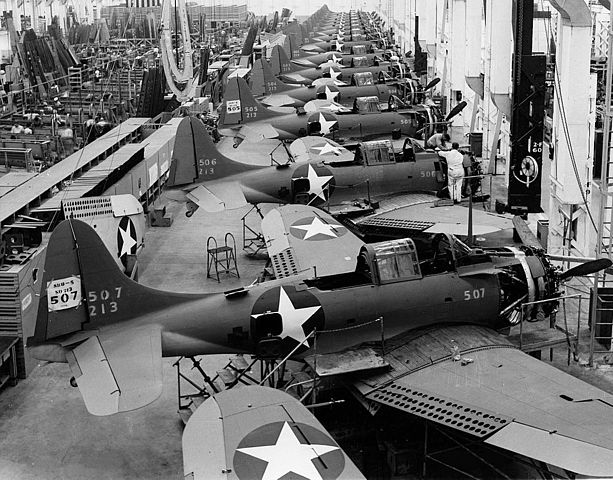
Production of the SBD-5 in Oklahoma Douglas plant, 1943
Evolution
SBD-1 (1940)
The SBD-1 was absorbed by the Marine Corps in late 1940. Production: 57, all in California. The SBD-1P was a reconnaissance variant made with the remaining planes in 1942-43.SBD-2 (1941)
SBD-2 went to the Navy in early 1941. It replaced the SBU Corsair and Curtiss SBC Helldiver biplanes still in service on US carriers. Production: 87. Also declined in the SBD-2P reconnaissance variant in 1943.SBD-3 (1941)
The next iteration was started manufacturing in early 1941. As requested by the Navy, it had increased armor and self-sealing fuel tanks, plus an armament standardized to four machine guns: Two 0.50 in (12.7 mm) forward-firing synchronized Browning M2 machine guns in the engine cowling and a twin 0.30 in (7.62 mm) flexible-mounted Browning M1919 machine guns in the rear. The bomb load was fixed and standardized to 2,250 lb (1,020 kg) total, with one 1,000 lb (454 kg) Mark 45 or larger under fuselage, and two 116 lb (52.6 kgs) under wings. 854 Produced.SBD-4 (1941)
The SBD-4 was provided with a 12-volt electrical system, a new 3-bladed Hamilton-Standard constant-speed propeller and fuel pumps. 780 Produced. A few were converted into SBD-4P reconnaissance aircraft. Comparison of the XBT-1 and XBT-2 (SBD)SBD-5 (1942)
The main standardized version of the Dauntless during the war. It was produced mostly in the Douglas plant of Tulsa (Oklahoma). Its main improvement was a 1,200 hp (890 kW) Wright R-1820-60 Cyclone 9-cylinder air-cooled radial piston engine, and increased ammunition supply. Production: 2,400. The Royal Navy evaluated it and some were used by the No. 25 Squadron of the Royal New Zealand Air Force, before replacing them by the Vought F4U Corsair. Others were supplied to the Free French Air Force in Europe in 1944 and were still used in Indochina after the war, as well as Mexico for those sold as surplus after 1945 (many countries purchased it). The SBD-5A was part of the A-24B last batch of 60 intended for USAAF which rejected it. Instead they were delivered to the USMC.SBD-6 (1944)
This final version, featuring more detail improvements and a Wright Cyclone 1,350 hp (1,010 kW), but production was terminated in the summer of 1944 (450 built). It was already replaced by the Curtiss Helldiver. Many ended in training units.A-24 banshee: The army Dauntless (1941)

The U.S. Army Air Force attack version, which of course lacked the tail hook and its aft pneumatic tire replaced a solid tail wheel. The First were assigned to the 27th Bombardment Group (Light) based in Hunter Field, Georgia for evaluation and training. A-24s took part in the famous large scale Louisiana maneuvers of September 1941. Ultimately two versions were declined of the Banshee in addition, the A-24A and A-24B with a host of modifications: indeed, they were took from the Navy production line: The A24 was the equivalent of the SBD-3, always without arrestor hook (168 built) while the A24A corresponded to the SBD-4 (170 built) and the A-24B to the SBD-5 (615 built). The USAAF used them in limited numbers as only 948 were delivered in all. They all used the Navy maintenance network so stayed in the Pacific exclusively until declared "limited standards". Only the Free French ones -about 50- saw action in Europe, in particular during and after Operation Dragoon for close air support (COS).
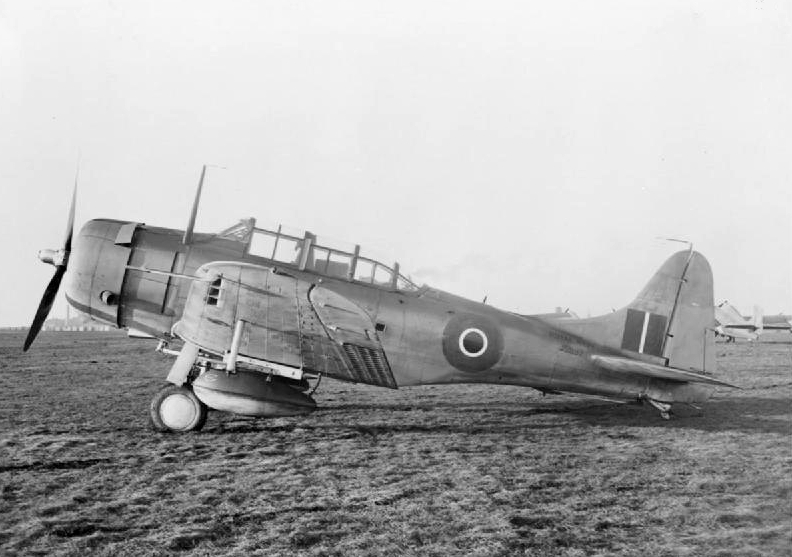
One of the few Dauntless Mk.I (SBD-5) experimented by the RNAS and RAF in 1942
They saw action in Australia, in the 16, 17 and 91th Bombardment Sqns in preparation of the defense of Java in early 1942. Some scored hits against Japanese shipping but they were still heavy preys. This early version also lacked armor and self-sealing tanks. They soldiered on in new Guinea afterwards. By July 1942, most of the A24s had been lost in action. Still waiting for the A-24 Shrike, the USAAF ordered the A-24A and later A-24B, which did better. The last arrived in December 1943, all based in Australia. However there was a change of doctrine and the USAAF no longer wanted dive bombers. They saw massive use during the Gilbert islands campaign, but started afterwards to be retired. Most ended with the Free French or were mothballed and sold after the war (Mexico and Chile). The US Army "psy-ops" branch also tested a screaming siren as for the Stukas, but it never went into production.
The SBD Dauntless in action with the USN
Affectionately known as the "Slow But Deadly", the SBD showed it was not easy meat for Japanese Zeros. Slow it was, but also agile, very resilient, and well defended.SBDs in the Pacific
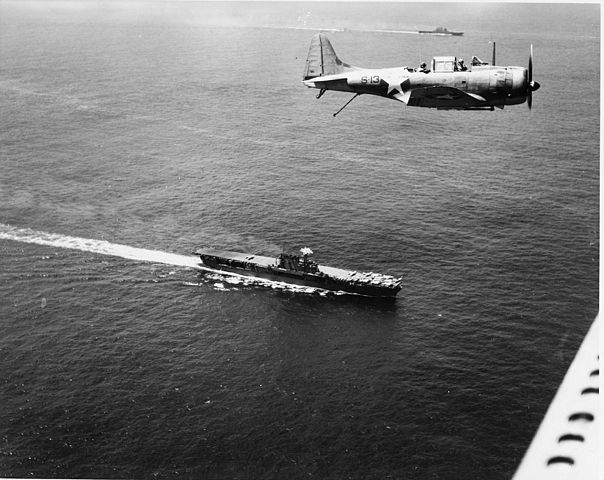
SBD over Saratoga and Enteprise in December 1942
Pearl Harbor:
U.S. Navy and Marine Corps SBD-1/2s were in action at Pearl Harbor: Most of the Marine Scout Bombing Squadron 232 (VMSB-232) was destroyed on the ground, at Ewa Mooring Mast Field. Those Navy SBDs at Pearl Harbor itself were also destroyed on the ground. Those on nearby aircraft carriers were available but cooperation with the rest of the fleet was poor. In any case, after the second wave there was a high risk of friendly fire. However on 10 December 1941, those from USS Enterprise sank the Japanese submarine I-70.
Gilbert, Marshall, Carolines Feb.-May 1942
In February–March 1942, SBDs from USS Lexington, Yorktown and Enterprise raided Japanese installations in the Gilbert and Marshall Islands. Later they took part in the defense of New Guinea, the first raids on Rabaul, on Wake Island, and Marcus Island.Coral Sea May 1942
The Dauntless saw decisive action for the first time at the Battle of the Coral. In coordination with TBD Devastators they sank the light CV IJN Shōhō and damaged IJN Shōkaku. The latter also lost many planes in the engagement. SBDs were also committed in local combat air patrols (CAP) and scored several kills against Japanese torpedo bombers attacking Lexington and Yorktown. The low flying, mostly immobile "kate" were indeed easy prey for the agile and well armed Dauntless, even if the latter was not very fast. It was well enough and they complemented well the "green" pilots of the Wildcats. In case of encounters with Zeros ad other fighters, the Dauntless also had a nasty surprise: The rear rear flexible-mount .30 in (7.62 mm) AN/M2 machine guns. They stayed effective against the lightly built Japanese fighters, gunners even priding themselves in making scores. Pilots also did not hesitated to used their good agility for aggressive stands. SBD pilot Stanley "Swede" Vejtasa fo example, attacked by three A6M2 Zero shot down two, cut off the wing of the third with his wingtip. This also gives some clues about the SBD sturdiness.The SBD contribution at Midway
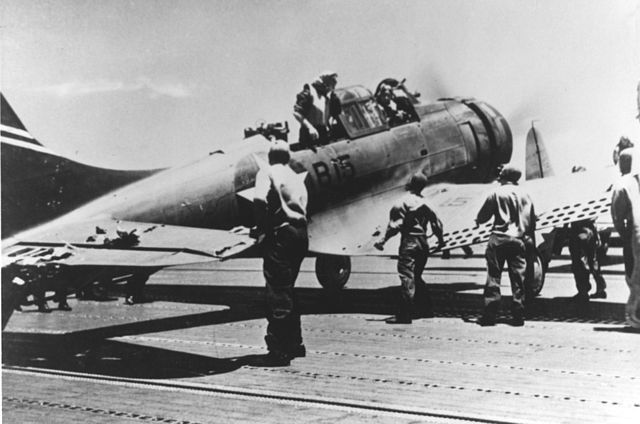
SBD back from bombing the Kaga
The SBD's most important contribution by early June 1942 entered the legend of aviation, well beyond the USN history. Four squadrons of SBDs, after quite some luck, arrived just on time, after a disastrous torpedo bomber attack, to caught of guard the Kido Butai. They attacked and sank, or fatally damaging all four Japanese fleet carriers. Three were in flames in six minutes (Akagi, Kaga, Sōryū) and the Hiryū later that day. They also badly damaged two heavy cruisers, sinking Mikuma eventually.
In contrast, SBDs of the Marine Corps which took off from Midway atoll (VMSB-241), poorly trained in dive-bombing and just partially converted from the SB2U Vindicator were content to perform glide bombing techniques on spot. Many were shot down during this glide. Just one survived to tell the tale, new in exhibition in a museum (see below). Carrier-borne squadrons escorted F4F Wildcats were very effective in the end.
Post-analysis of this success alleged that the previous diversion of Zero fighters was a crucial factor. Also, quite miraculously, three squadrons (47 SBDs total from VS-6, VB-6, and VB-3) plus a squadron of 12 VT-3 TBD torpedo aircraft and the six F4F from VF-3 all arrived simultaneously, and thus, despite VS-6 and VB-6 arriving from different directions. -The lack of central fighter direction for the Japanese, meaning all 40 or so Zeros were all hunting down TBDs, of the few F4Fs covering theses. SBDs arrived unhindered and make a perfect approach.
Guadalcanal 1942-43
Midway was not a strictly decisive battle as if indeed the Kido Butai was decimated, it did not counted its main strenght. Veteran carriers and new CVs entering service plus a surface fleet fleet largely intact made the IJN still a terrifying foe, that woud fight teeth and nails in the south pacific for more than a year. During the Guadalcanal, Solomons and Caroline campaign, a dozen more fierce naval air battles saw the SBDs olaying their part again, with growing experience ad confidence. SBDs also were parked at Henderson Field in support and also played their part. They straddled Japanese shipping off New Georgia in the "slot" by daylight, and sank the carrier Ryūjō on 24 August 1942, badly damaging Three other Japanese carriers, sinking also a cruiser and nine transports during the Naval Battle of Guadalcanal alone.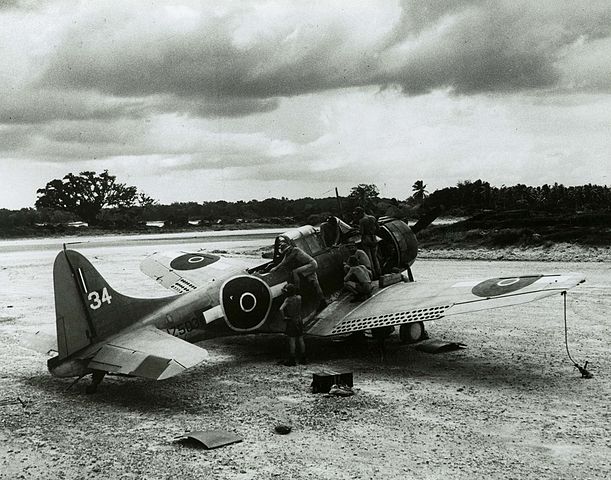
RNZN SBD-4 at Espiritu Santo in 1943
Philippine Campaign 1944
In 1944, SBDs were gradually replaced by the much more powerful SB2C Helldiver. However the first of these were so problematic that pilots called them "pigs" and asked to keep their SBDs until the Navy forced them otherwise. At least on carriers, the Curtiss was imposed, but many ground-based units still operated the SBD until late 1944. At the Battle of the Philippine Sea in June 1944, an extreme long range air strike on the retreating Japanese fleet with just twenty minutes of daylight was performed. Of the 215 carrier-borne planes taking part, only 115 made it back. 20 were lost in action, 80 were ditched into the sea short of fuel and the remainder landed on the carriers by night, some missing. 26 SBDs however made it back, showing their ability to spare gasoline. This Battle was in effect the last time carrier-borne SBDs fought. This from Marine squadrons went on to fly them however until the end of the war. Dive bomber pilots always preferred the SBD over the new Helldiver, as it was lighter, more agile, with excellent low-speed handling characteristics excellent for carrier landings. Not the case of the Curtiss. The SBC Helldiver which replaced the SBD was almost twice as powerful and much faster, carried more bombs, but was never as popular, to the point CV pilots envied those of the Marines, that still used the Dauntless until the end of the war.
The SBC Helldiver which replaced the SBD was almost twice as powerful and much faster, carried more bombs, but was never as popular, to the point CV pilots envied those of the Marines, that still used the Dauntless until the end of the war.
SBDs in the West
SBD saw action during Operation Torch, the Allied landings in North Africa (November 1942), from USS Ranger and two escort carriers. In Operation Leader, SBDs from Ranger again, attacked German shipping around Bodø, in Norway. Many escort carriers were equipped with it, participating in the escort missions, but re-equipped with depth charges, although it was not their speciality.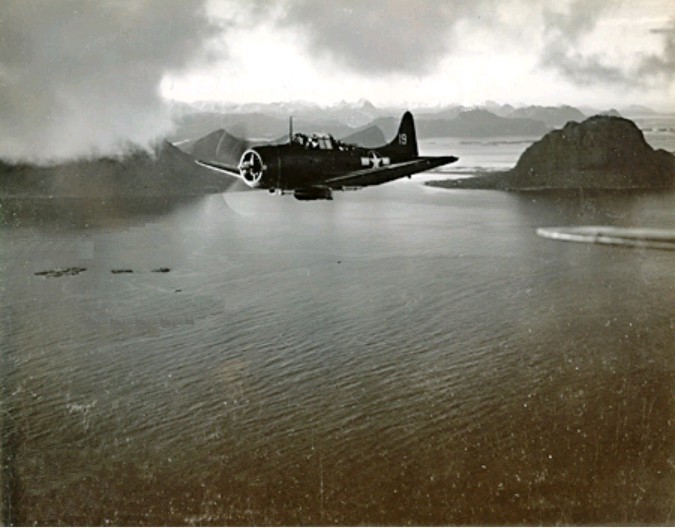
A VB-4 SBD near Bodø, Norway, 4 October 1943.
The Dauntless ended statistically as the most important and effective non-fighter aircraft in the Pacific War. The very best was the Grumman Hellcat. All in all, for a total of 5,936 SBDs produced, including the USAF A20s until July 1944, these stacked 1,189,473 operational hours, including 25% from aircraft carriers. Battle record included six Japanese carriers, 14 cruisers, six destroyers, 15 transports, many smaller crafts, and about 100+ aircraft shot down. Barrett Tillman wrote a book on the Dauntless he flew, claimed that it had a positive score against enemy aircraft, gaining more aerial victories than its own losses due to fighters, something rare for what was essentially a bomber.

Author's basic rendition of the Dauntless, from technical blueprint
Where to see the Dauntless ?
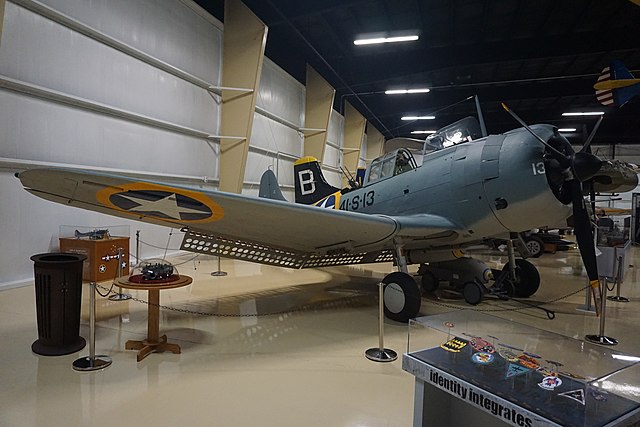 SBD-3 on display at Air Zoo
SBD-3 on display at Air Zoo
As of today about twenty SBDs are displayed moslty in the US, including 3-4 in flying conditions.
-A-24 at the Erickson Aircraft Collection in Madras, Lone Star Flight Museum in Houston, Texas
-A24 in storage at the Golden Hill Storage Facility of Fantasy of Flight in Polk City, Florida.
SBDs:
-Royal New Zealand Air Force Museum in Christchurch.
-Vilu War Museum in Guadalcanal
-Yanks Air Museum in Chino, California.
-One Privately owned in Bellevue, Washington.
-Planes of Fame in Chino, California.
-Commemorative Air Force – Dixie Wing in Peachtree City, Georgia
-National Museum of the United States Air Force at Wright-Patterson Air Force Base in Dayton, Ohio.
-Pima Air & Space Museum, adjacent to Davis-Monthan Air Force Base, Tucson, Arizona.
-National Naval Aviation Museum at Naval Air Station Pensacola, Florida.
-Pacific Aviation Museum at Ford Island, Hawaii.
-Air Zoo
-National World War II Museum in New Orleans, Louisiana.
-National Museum of the Marine Corps at Marine Corps Base Quantico, Virginia.
-Air Zoo in Kalamazoo, Michigan, on loan from National Naval Aviation Museum at Naval Air Station Pensacola.
-USS Lexington (CV-16) museum in Corpus Christi, Texas.
-National Naval Aviation Museum at Naval Air Station Pensacola, Florida
-San Diego Aerospace Museum in San Diego, California, on loan from the NNAM, NAS Pensacola.
-Battle of Midway Memorial at Midway Airport in Chicago, Illinois.
-USS Yorktown (CV-10) Patriot's Point Naval and Maritime Museum in Mount Pleasant, South Carolina.
-Palm Springs Air Museum in Palm Springs, California
-National Air and Space Museum in Washington, D.C.
-USS Midway Museum in San Diego, California.
-Flying Leatherneck Aviation Museum in San Diego, California.
-Castle Air Museum at the former Castle Air Force Base in Atwater, California.
-Military Aviation Museum in Virginia Beach, Virginia.
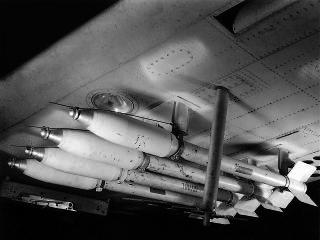
FFAR standard 227 m rockets under the wings of an SBD
Gallery:

Douglas Dauntless SBD-1 of VMB-2, Marine Air Group 11, 1940

SBD-1 from VMSM-232, USMC, Oahu, Hawaii, 7 December 1941. It was lost like many others on the ground during the attack.

SBD-2 from Air Group Commander Howard Young, CV6 USS Enteprise at Pearl Harbor, December 1941

SBD-3 onboard USS Enterprise, VB-6, February 1942

Same, different livery

SBD-3 from VS-2, 7-8 May 1942

SBD-3 onboard USS Lexington, battle of coral sea, May 1942

SBD-3 of VS-5, USS Yorktown (CV-5), Midway June 1942

SBD-3 onboard USS Wasp, Guadalcanal, August 1942. Note the hastily painted over stars roundels in order to made them more visible

SBD-3 onboard USS Ranger (CV-3), VS-41, Operation Torch, North Africa, November 1942

SBD-4 of VMSB 243, 1st Air Group, Munda airfield, New Georgia, 1943

SBD-5, VB-12 USS Saratoga (CV-3), November 1943.

SBD-5 of VB-16, USS Lexington (CV-16), Battle of the Gilbert Islands, November 1943. The tritone camouflage was just introduced.

SBD-5, VMSB-231 Marine Air Group 22 working with TF-58, Majuro, 1944

SBD-5, VMS-3, USMC, Caribbean May 1944, Atlantic Theater scheme.

US Marines SBD-6, VBMS-231 "ace of spades" in 1945

SBD-5 N°25 Sqn RNZN, South West Pacific, 1944-45
A20 Banshee

Douglas A-24 Banshee USAAF, 27 Squadron USAAF at Darwin air base (destroyed, Darwin raid, February, 19, 1942)
In foreign service

French Navy SBD-5, Aéronavale Flotille 4FB Cognac Base, January 1945

A20 in Chilean service, 1950
More Photos:
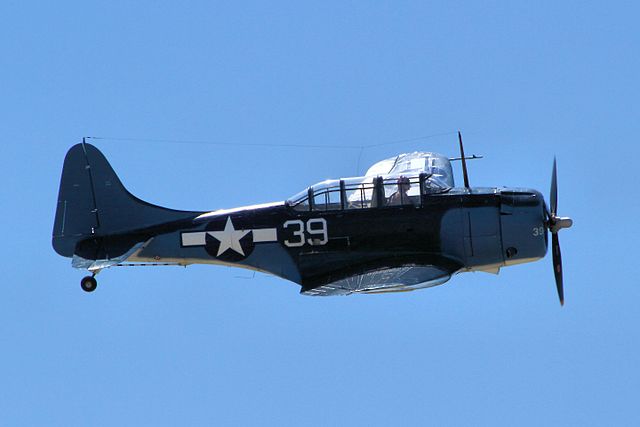
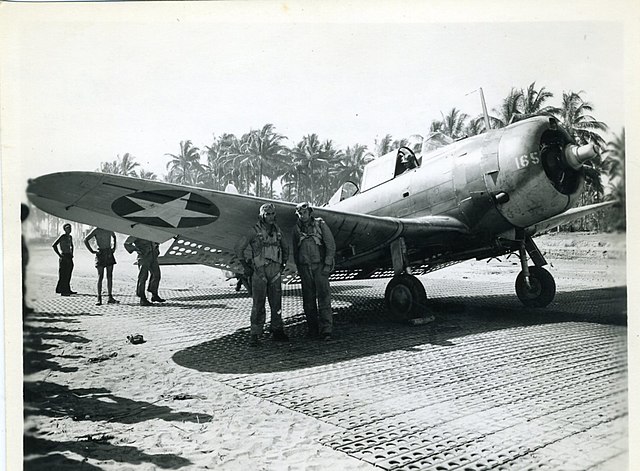
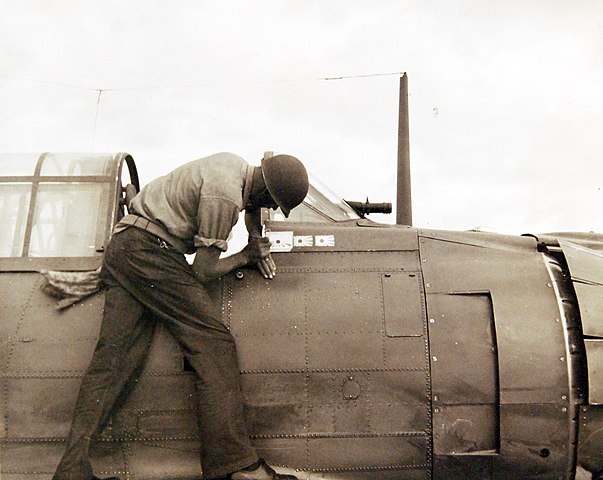
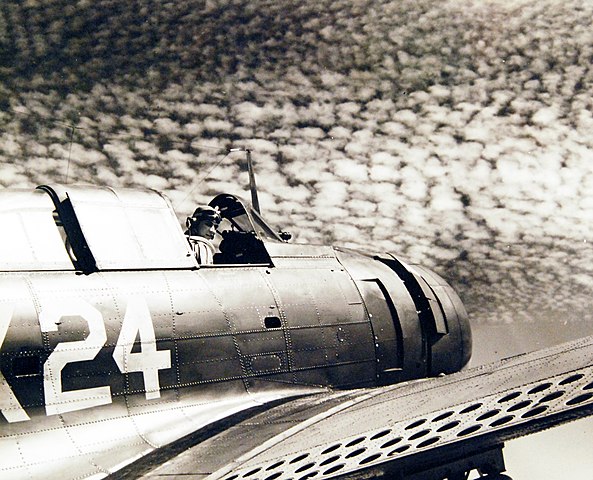
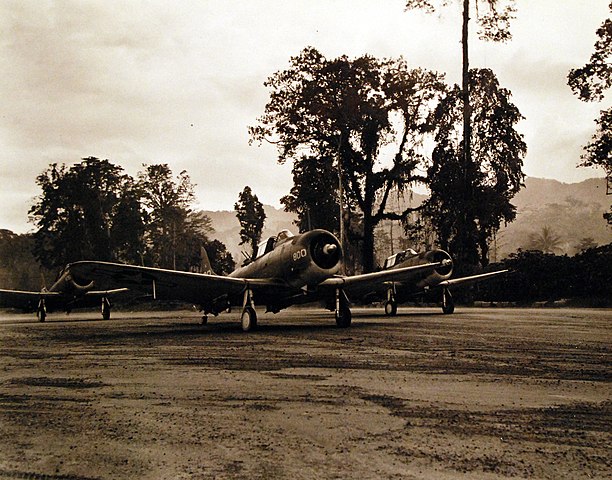

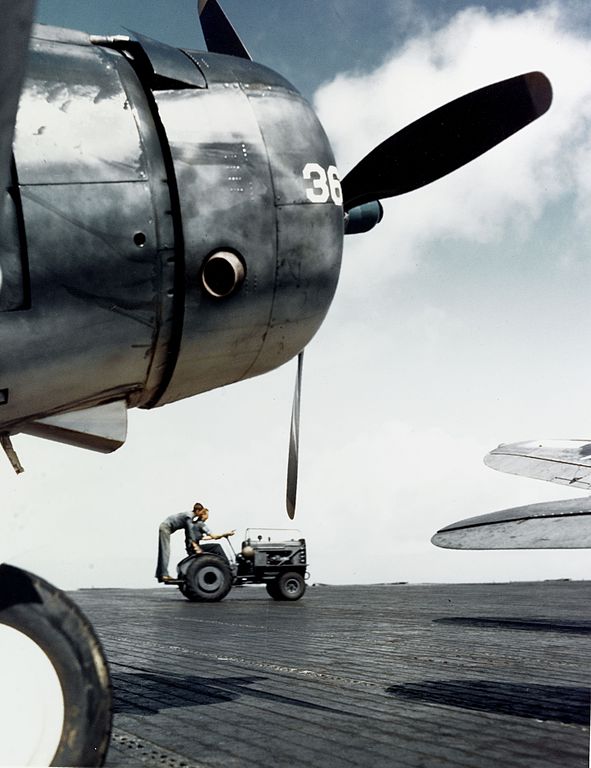
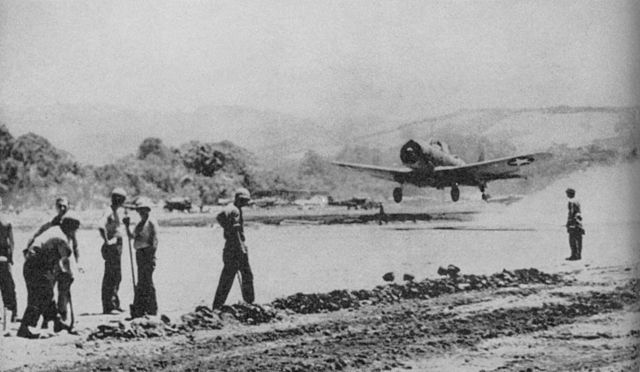
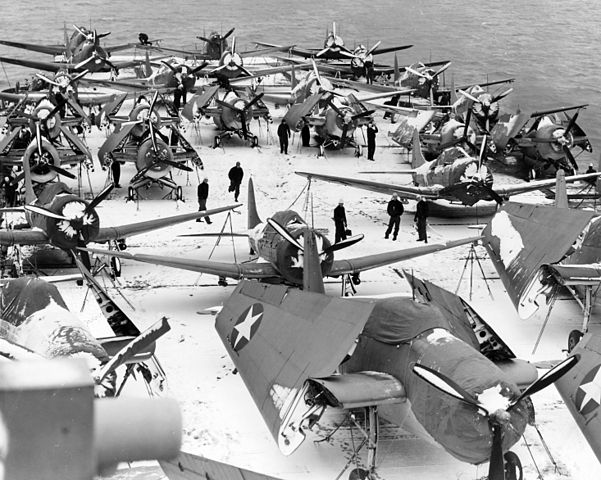
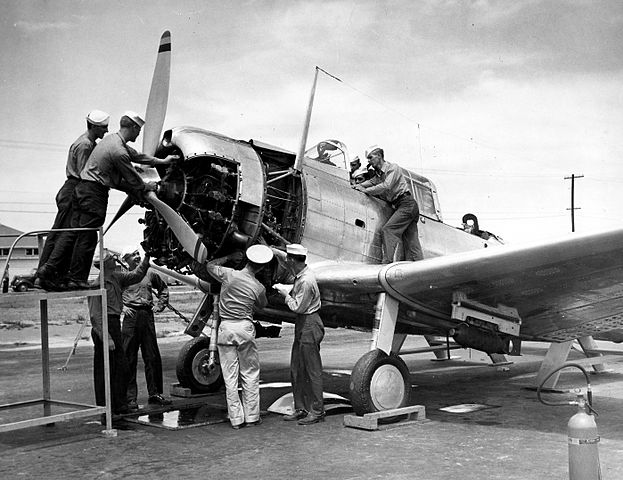

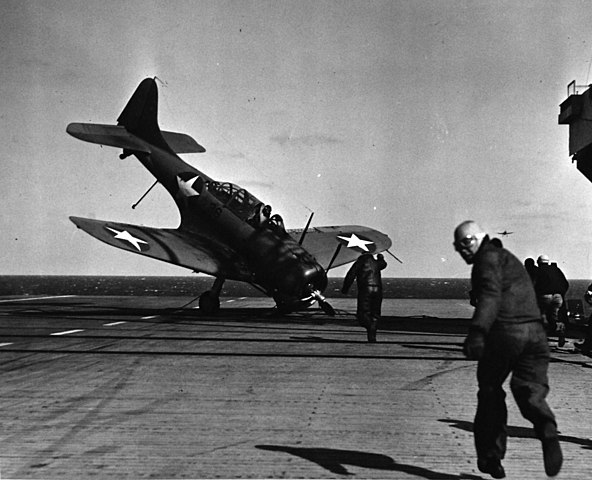
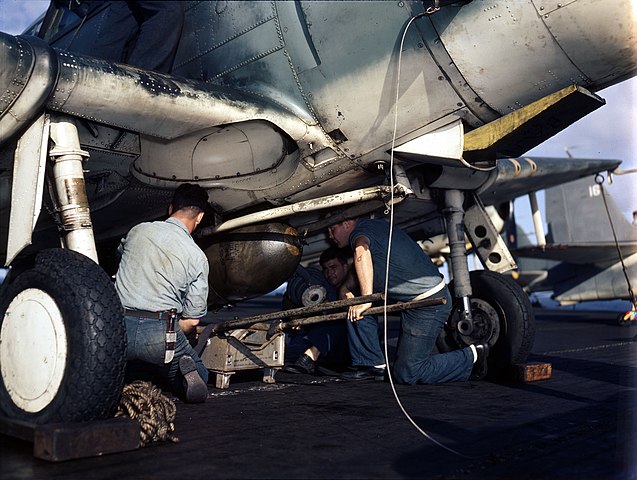
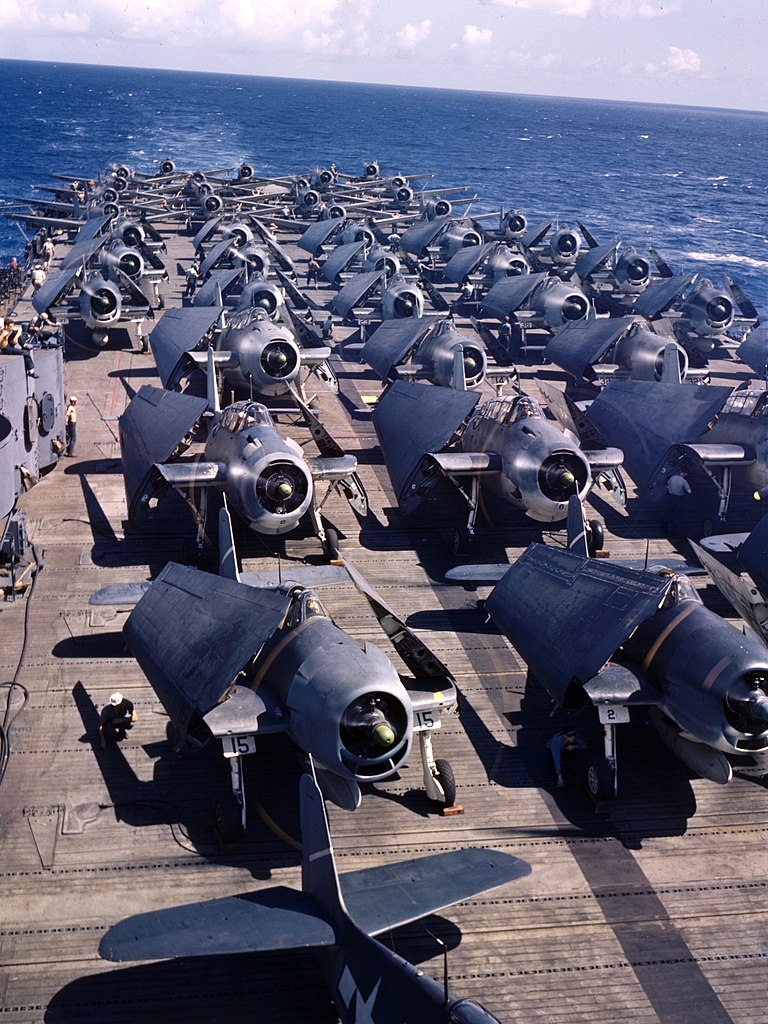

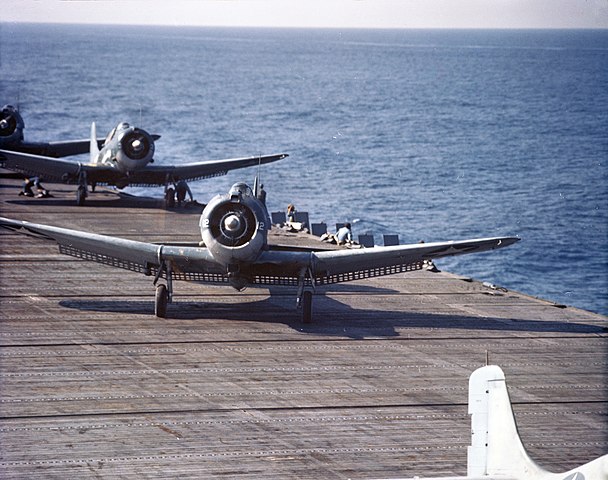
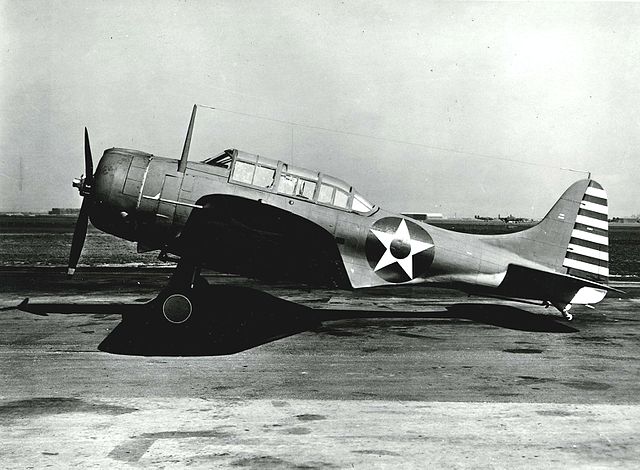

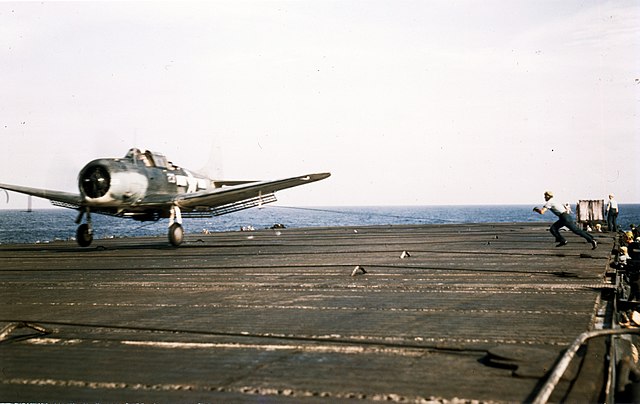
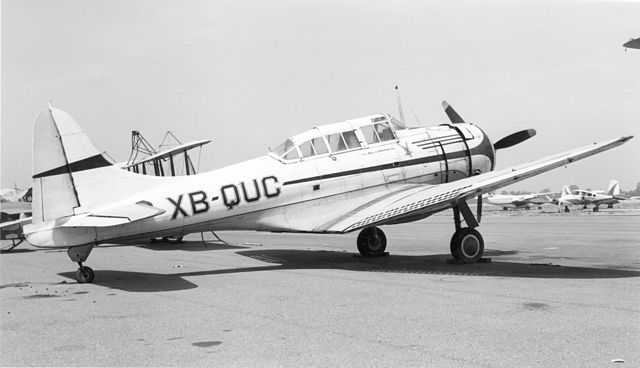
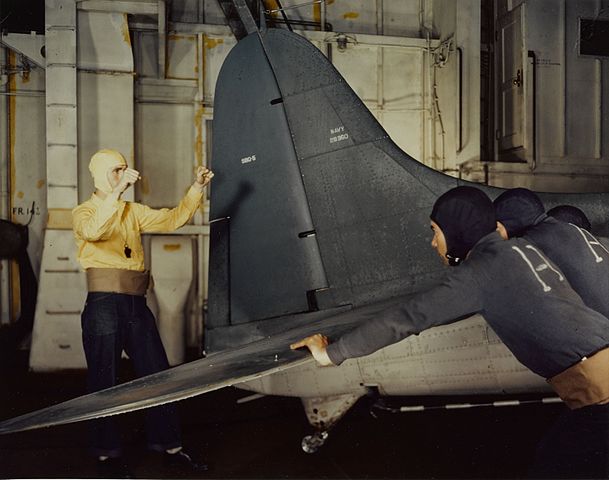

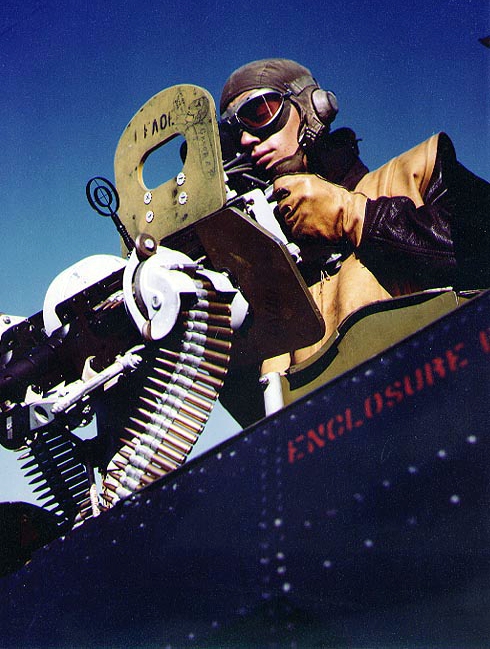

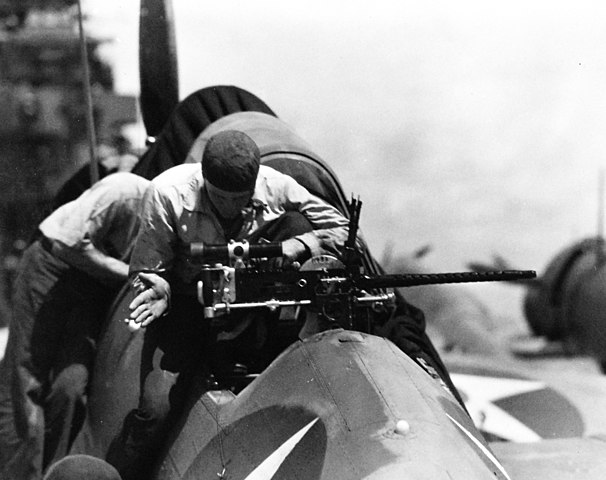

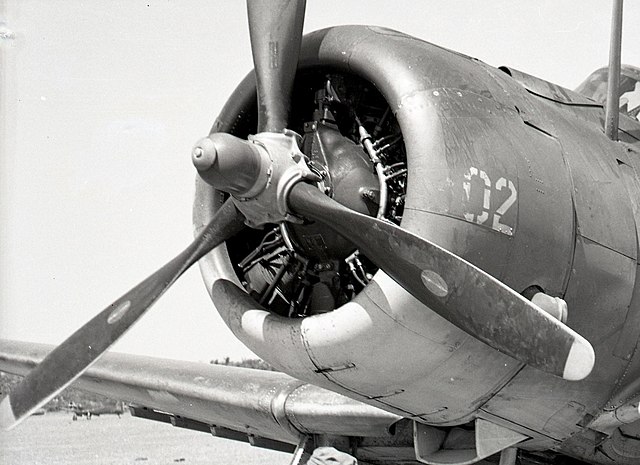
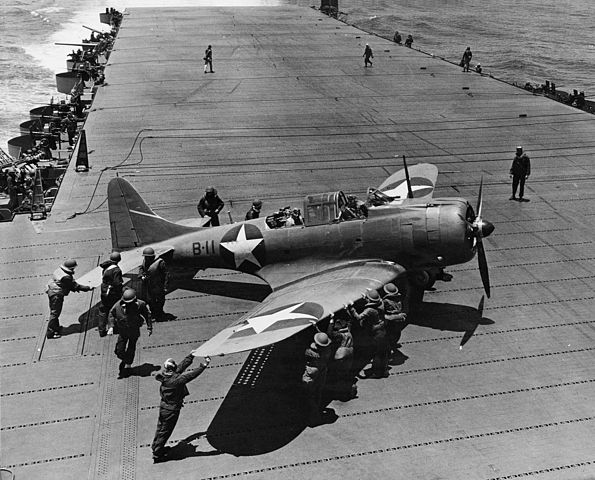
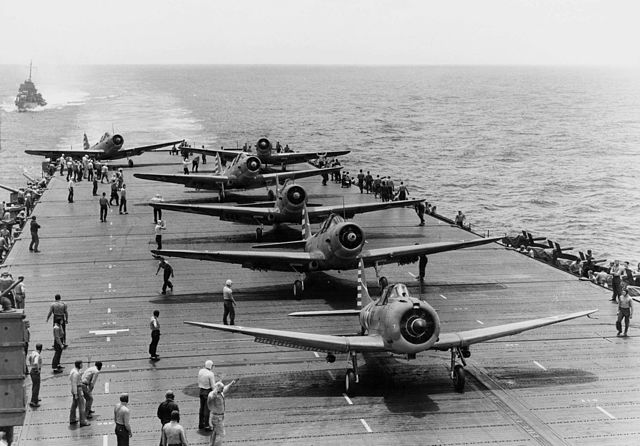
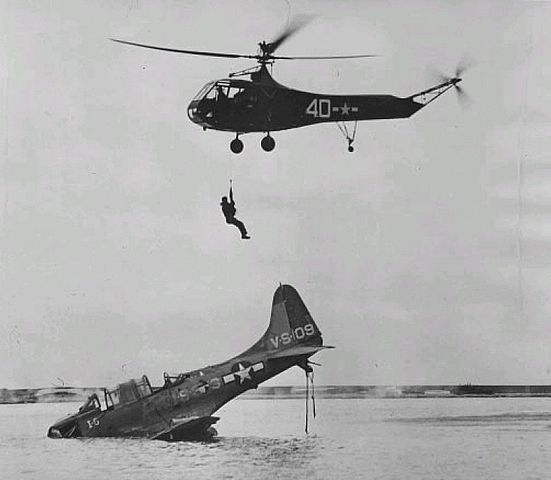
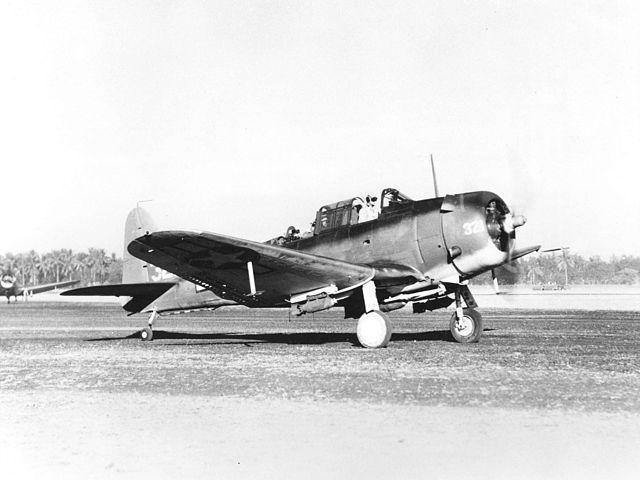
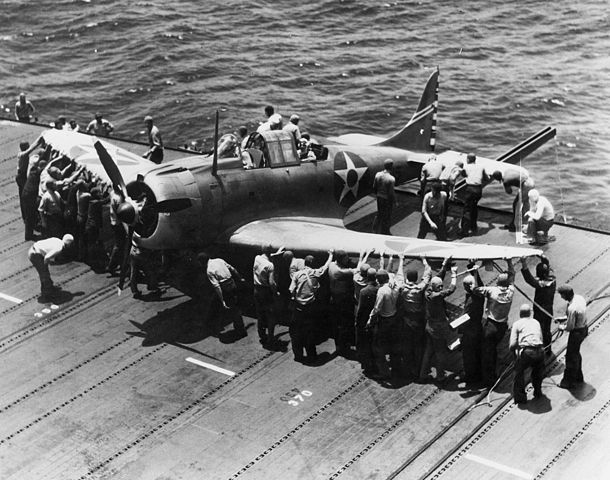
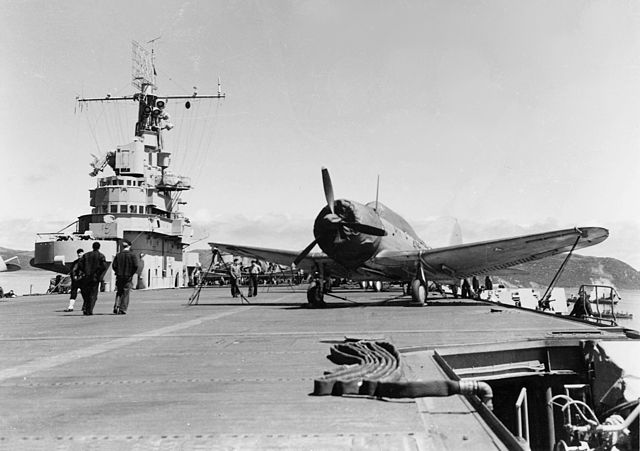
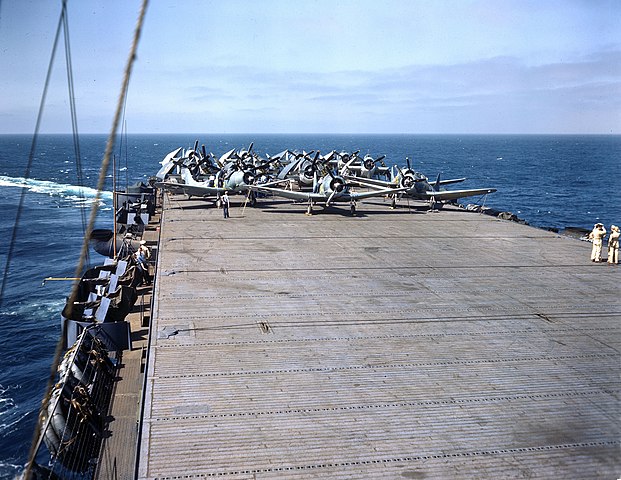
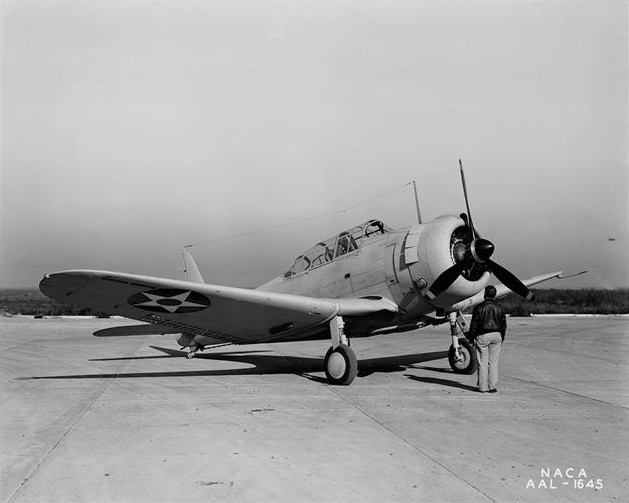
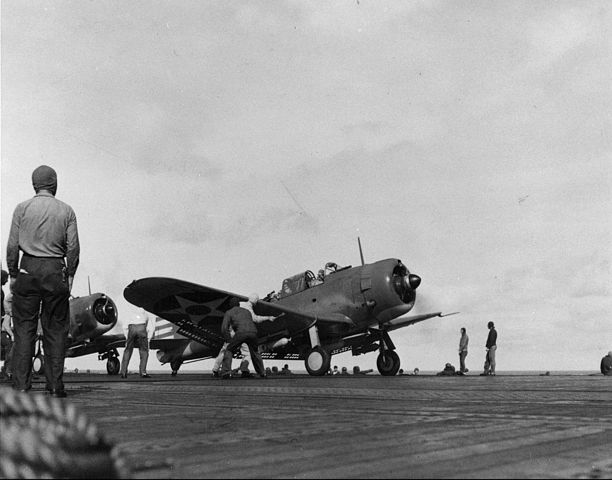
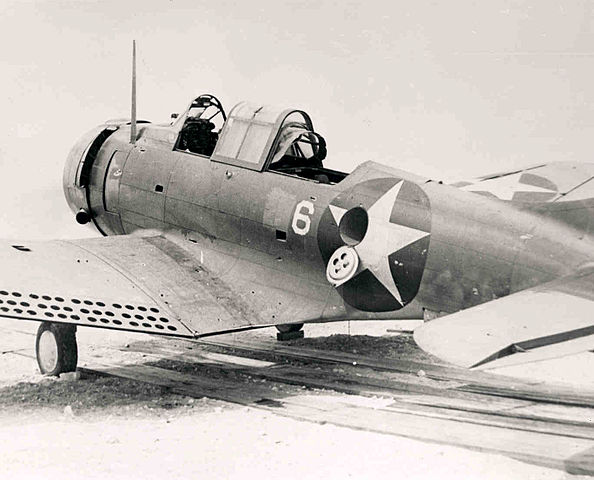
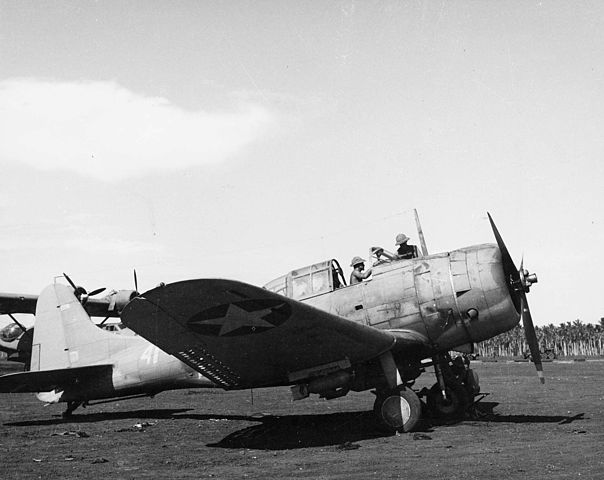
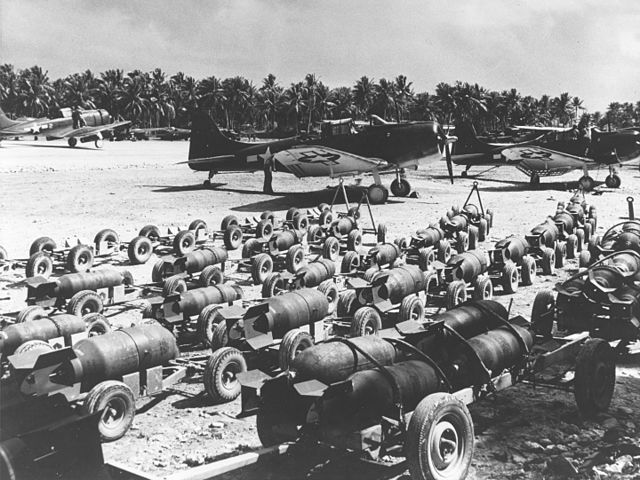
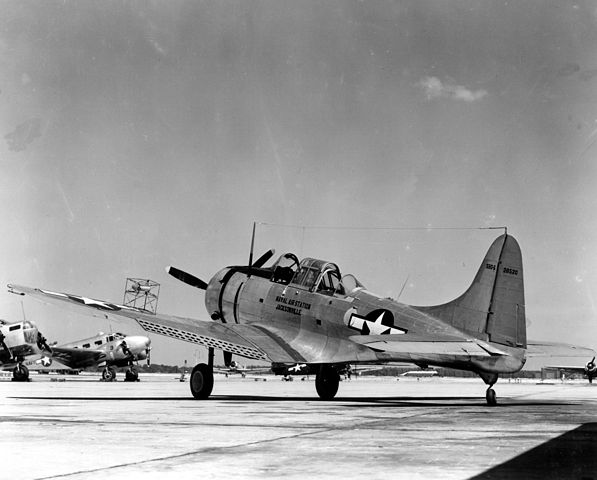

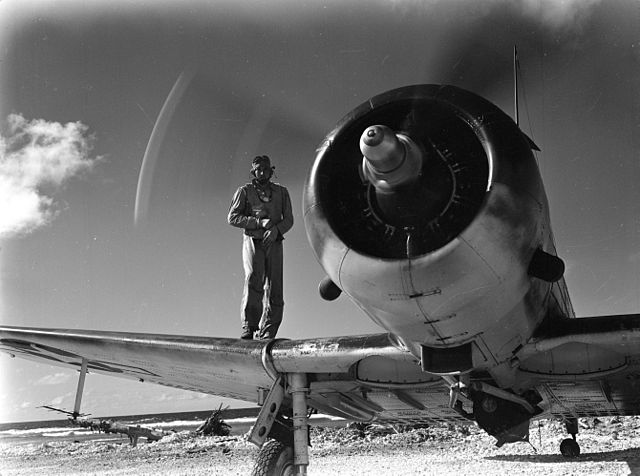
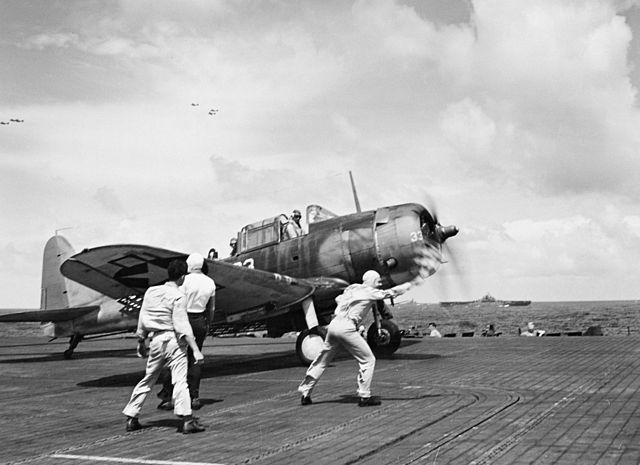
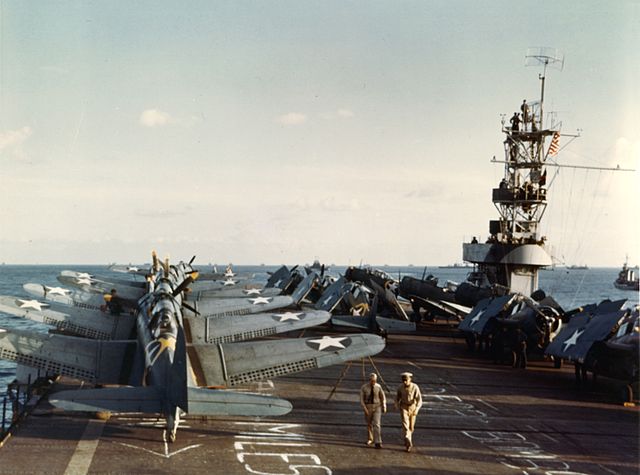
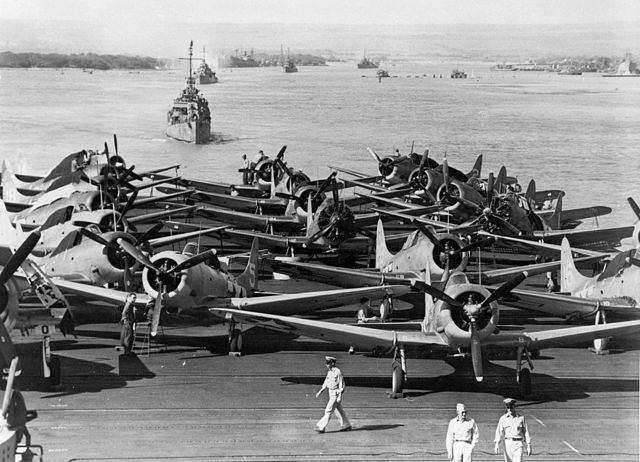
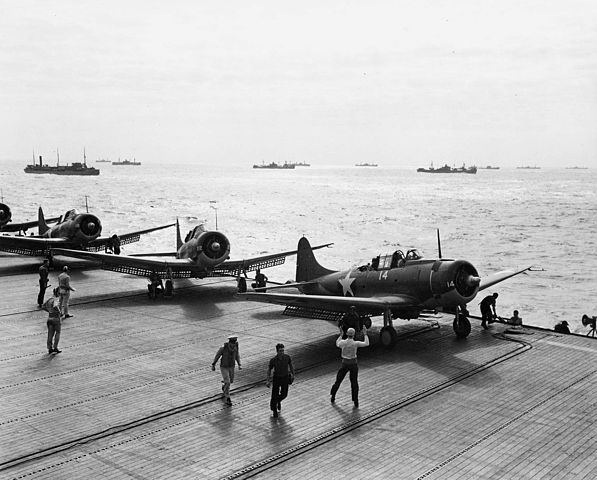
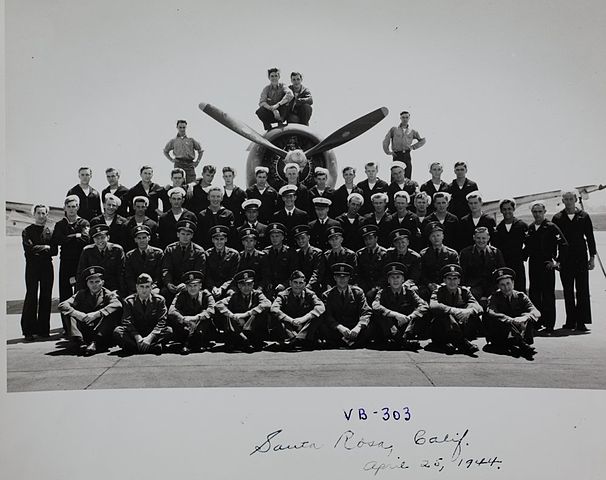
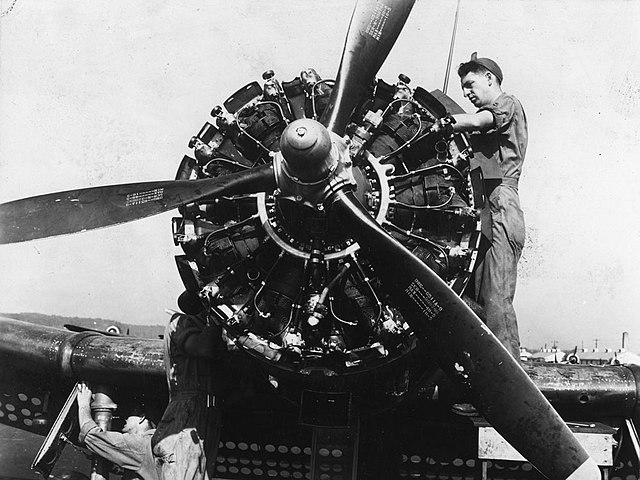
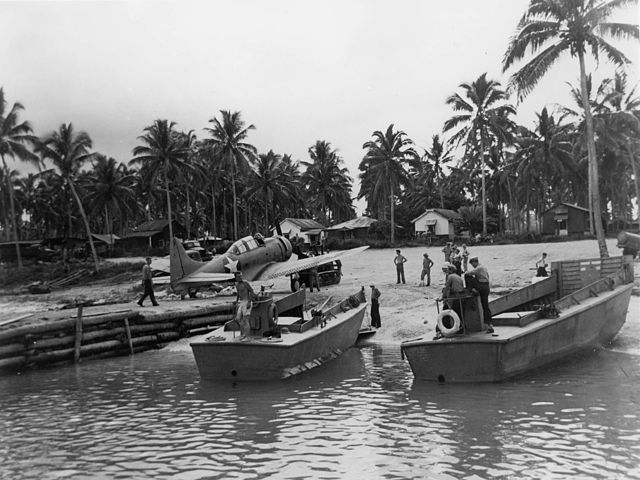
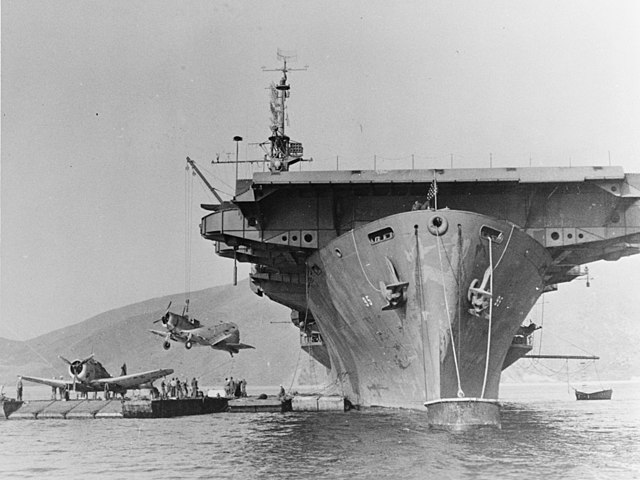
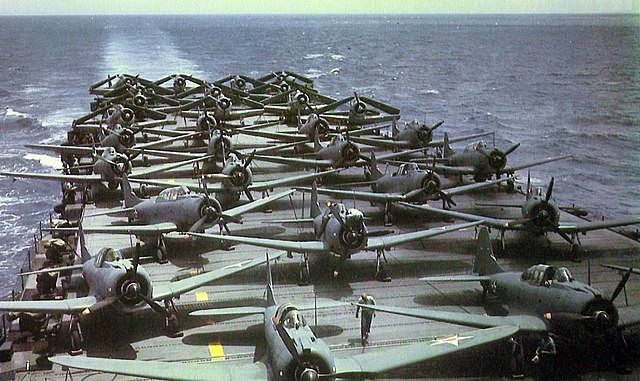
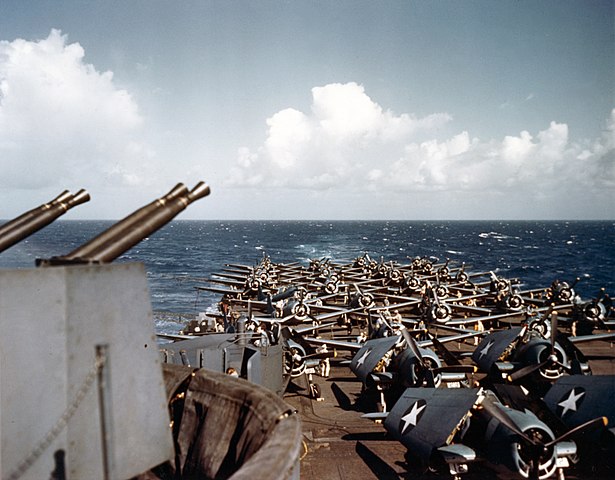
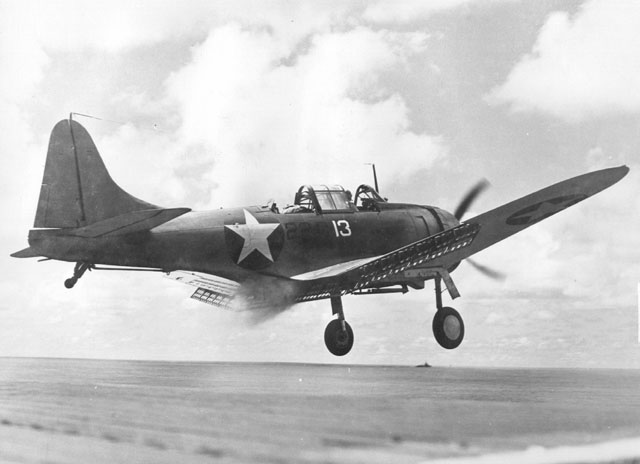
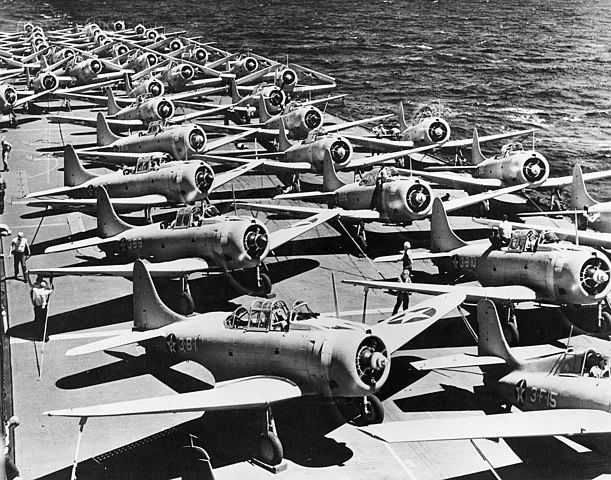
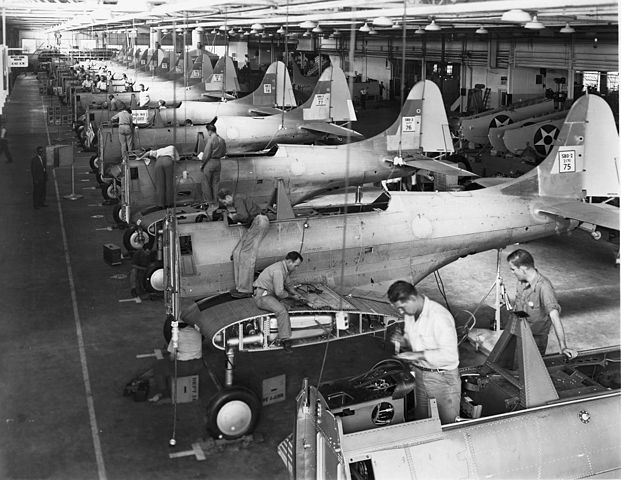
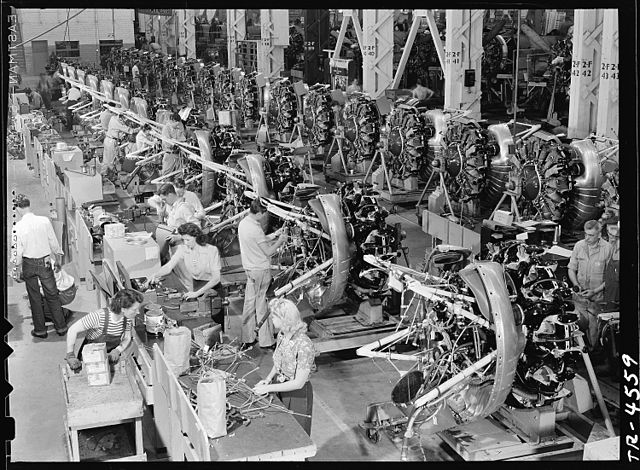
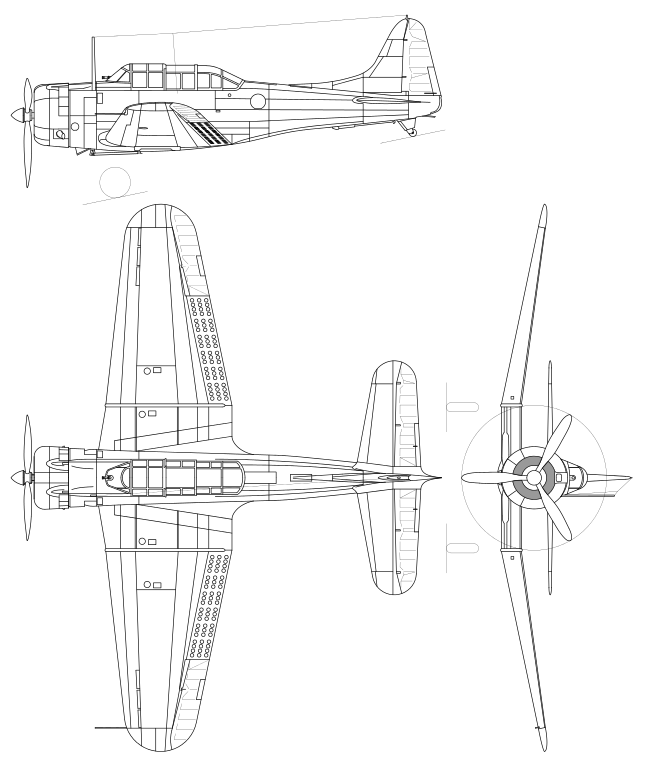
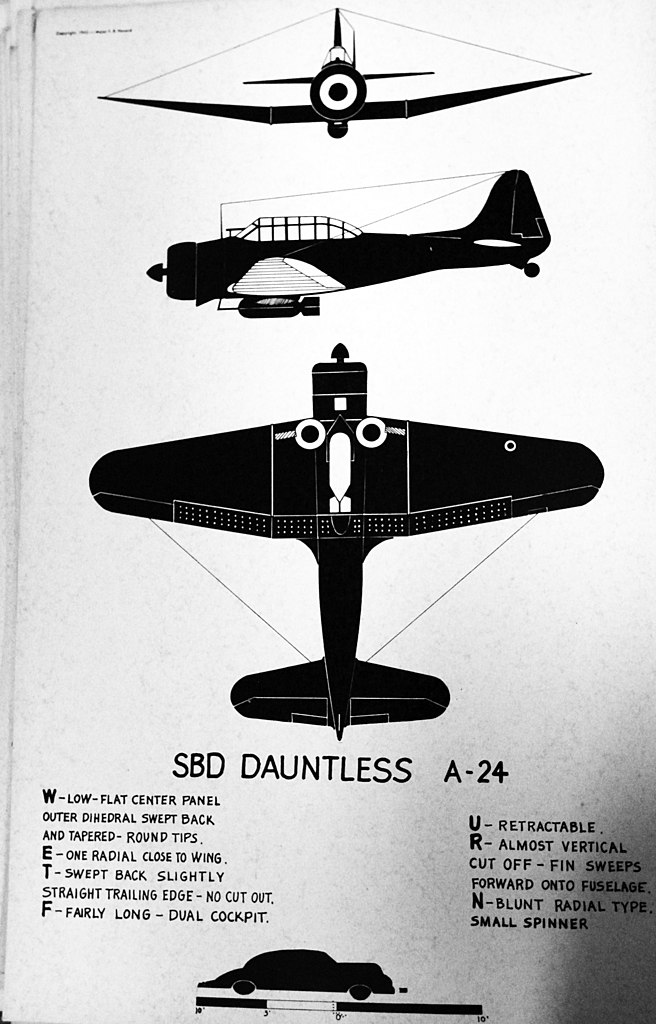
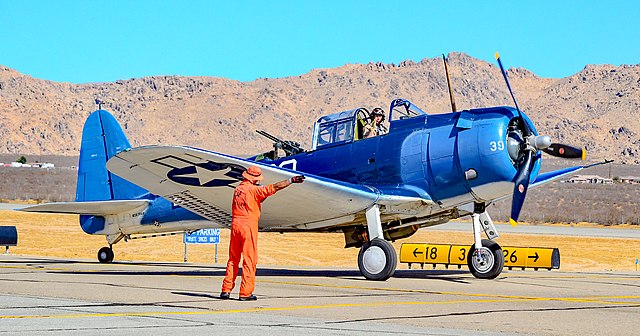
Read More/Src
historyextra.comlegendsintheirowntime.com
airwar.ru
weaponsandwarfare.com
wikipedia.org
militaryfactory.com/
warbirdalley.com
pacificwrecks.com
planesoffame.org
airbasegeorgia.org
PDF patriot point
On Midway.org/
On airandspace.si.edu
flyingleathernecks.org/
On warbirdsnews.com
On aerialvisuals.ca
On usslexington.com
On airzoo.org
On usmcmuseum.com
On pearlharboraviationmuseum.org/
On nationalww2museum.org
sandiegoairandspace.org
About Swede Vetjasa, USN ace
On pearlharboraviationmuseum.org
aviationarchaeology.com
ericksoncollection.com
Midway report
yanksair.org
nationalmuseum.af.mil
http://www.compass.dircon.co.uk/SBD.htm
On aero-web.org (archive)
On angelfire.com/fm/odyssey/philippinesea.htm
On dive-bombers.co.uk
On Google Books
Virtual Tour of the Dauntless cockpit
More CC photos of the Dauntless
Books: Bowers, Peter M. United States Navy Aircraft since 1911. Annapolis, Maryland, USA: Naval Institute Press, 1990.
Brazelton, David. The Douglas SBD Dauntless, Aircraft in Profile 196. Leatherhead, Surrey, UK: Profile Publications Ltd., 1967.
Brown, Eric, CBE, DCS, AFC, RN, William Green and Gordon Swanborough. "Douglas Dauntless". Wings of the Navy, Flying Allied Carrier Aircraft of World War Two. London: Jane's Publishing Company, 1980
Buell, Harold L. Dauntless Helldivers: A Dive Bomber Pilot's Epic Story of the Carrier Battles. New York: Crown, 1991.
Dann, Richard, S. SBD Dauntless Walk Around, Walk Around Number 33. Carrollton, Texas, USA: Squadron/Signal Publications, Inc., 2004.
Drendel, Lou. U.S. Navy Carrier Bombers of World War II. Carrollton, Texas, USA: Squadron/Signal Publications, Inc., 1987.
Francillon, René J. McDonnell Douglas Aircraft since 1920. London: Putnam, 1979
Gunston, Bill. The Illustrated History of McDonnell Douglas Aircraft: From Cloudster to Boeing. London: Osprey Publishing, 1999.
Hernandez, Daniel V. with Lt. CDR Richard H. Best, USN Ret. SBD-3 Dauntless and the Battle of Midway. Valencia, Spain: Aeronaval Publishing
Howard, John Jr. A Marine Dive-Bomber Pilot at Guadalcanal. Tuscaloosa, Alabama, USA: University of Alabama Press, 1987.
Janowicz, Krzysztof and Andre R. Zbiegniewski. Douglas SBD Dauntless (Bilingual Polish/English). Lublin, Poland: Kagero, 2007.
Jenks, Cliff F.L. with Malcolm Laird and Phil Listemann. Allied Wings No.5: The Dauntless in RNZAF Service. France: www.raf-in-combat.com, 2008.
Kinzey, Bert. SBD Dauntless in Detail & Scale, D&S Vol.48. Carrollton, Texas, USA: Squadron/Signal Publications, Inc., 1996.
Mondey, David, The Concise Guide to American Aircraft of World War II. London: Chancellor, 1996.
Pęczkowski, Robert. Douglas SBD Dauntless. Sandomierz, Poland/Redbourn, UK: Mushroom Model Publications, 2007.
Potter, E. B. Admiral Arliegh Burke. Annapolis, Maryland: U.S. Naval Institute Press, 2005.
Smith, Peter C. Douglas SBD Dauntless. Ramsbury, Marlborough, Wiltshire, UK: The Crowood Press Ltd., 1997.
Smith, Peter C. The History of Dive-Bombing. Barnsley, UK: Pen & Sword Aviation, 2007.
Stern, Robert. SBD Dauntless in Action, Aircraft Number 64. Carrollton, Texas, USA: Squadron/Signal Publications, Inc., 1984.
Tillman, Barrett. The Dauntless Dive Bomber of World War II. Annapolis, Maryland, USA: Naval Institute Press, 1976 (softcover 2006).
Tillman, Barrett. SBD Dauntless Units of World War 2. Botley, Oxford, UK: Osprey Publishing, 1998.
Tillman, Barrett and Robert L. Lawson. U.S. Navy Dive and Torpedo Bombers of World War II. St. Paul, Minnesota, USA: Motor Books Publishing, 2001.
White, Alexander S. Dauntless Marine: Joseph Sailer Jr., Dive-Bombing Ace of Guadalcanal. Santa Rosa, California, USA: Pacifica Press, 1997.
Wildenberg, Thomas. Destined for Glory: Dive Bombing, Midway, and the Evolution of Carrier Airpower. Annapolis, Maryland: U.S. Naval Institute Press, 1998.
Wheeler, Barry C. The Hamlyn Guide to Military Aircraft Markings. London: Chancellor Press, 1992.
Yenne, Bill. McDonnell Douglas: A Tale of Two Giants. New York: Crescent Books, 1985.
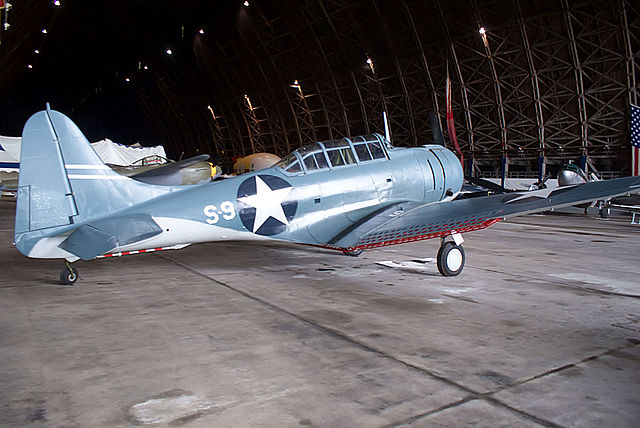
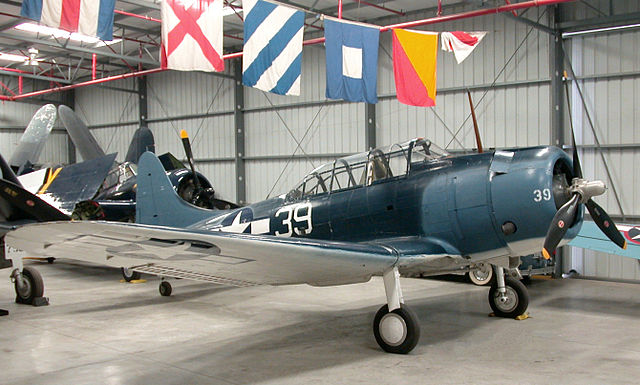

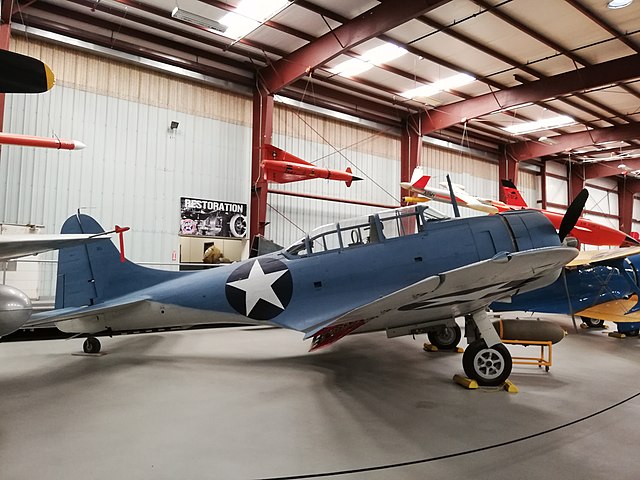
Videos:
On Dark Skies
In the cockpit of a SBD
WW2 educational movie dive bombing
Drachinfels - The Battle of Midway - Myths, Legends and Greatness (with Jon Parshall)
The full monty: Compete history overview in 8 parts by Mark Seven
Parts: 2 - 3 - 4 - 5 - 6 - 7 - 8
The SBD in 3D:
Model Kits Galore:
Famous as it is, the SBD has inspired many model kit manufacturers since the 1950s. The list is quite exhaustive and embraces many scales. Here are some samples:Douglas SBD-3 Dauntless, Cleveland Model & Supply 1:16
Douglas SBD-1/2 Dauntless HobbyBoss 1:18
Douglas SBD-3 Dauntless Comet 1:25
Dauntless SBD Scientific 1:28
Douglas SBD-5 Dauntless Matchbox/AMT 1:32
SBD-5 "Battle of the Philippine Sea" Academy 1:48
Douglas SBD-4 Dauntless Marusan 1:50
Douglas SBD-3/5 DAUNTLESS Airfix 1:72
Douglas SBD Dauntless Mitsuwa Model 1:144
SBD-3 DAUNTLESS (Pre-painted) Trumpeter 1:350
F4F/SBD/TBD FlyHawk Model 1:700
More on scalemates
- Lohner E (1913)
- Macchi M3 (1916)
- Macchi M5 (1918)
- Ansaldo ISVA (1918)
- Sopwith Baby (1916)
- Short 184 (1916)
- Fairey Campania (1917)
- Sopwith Cuckoo (1917)
- Felixstowe F.2 (1917)
- Friedrichshafen FF 33 (1916)
- Albatros W4 (1916)
- Albatros W8 (1918)
- Hanriot HD.2
- Grigorovitch M5
- IJN Farman MF.7
- IJN Yokosho Type Mo
- Yokosho Rogou Kougata (1917)
- Yokosuka Igo-Ko (1920)
- Curtiss N9 (1916)
- Aeromarine 39
- Vought VE-7
- Douglas DT (1921)
- Boeing FB.5 (1923)
- Boeing F4B (1928)
- Vought O2U/O3U Corsair (1928)
- Blackburn Blackburn (1922)
- Supermarine Seagull (1922)
- Blackburn Ripon (1926)
- Fairey IIIF (1927)
- Fairey Seal (1930)
- LGL-32 C.1 (1927)
- Caspar U1 (1921)
- Dornier Do J Wal (1922)
- Rohrbach R-III (1924)
- Mitsubishi 1MF (1923)
- Mitsubishi B1M (1923)
- Yokosuka E1Y (1923)
- Nakajima A1N (1927)
- Nakajima E2N (1927)
- Mitsubishi B2M (1927)
- Nakajima A4N (1929)
- CANT 18
WW1
✠ K.u.K. Seefliegerkorps:
 Italian Naval Aviation
Italian Naval Aviation
 RNAS
RNAS
 Marineflieger
Marineflieger
 French Naval Aviation
French Naval Aviation
 Russian Naval Aviation
Russian Naval Aviation
 IJN Air Service
IJN Air Service
 USA
USA
Interwar
 Interwar US
Interwar US
 Interwar Britain
Interwar Britain
 Interwar France
Interwar France
 Interwar Germany
Interwar Germany
 Interwar Japan
Interwar Japan
 Interwar Italy
Interwar Italy
- Curtiss SOC seagull (1934)
- Grumman FF (1931)
- Curtiss F11C Goshawk (1932)
- Grumman F2F (1933)
- Grumman F3F (1935)
- Northrop BT-1 (1935)
- Grumman J2F Duck (1936)
- Consolidated PBY Catalina (1935)
- Brewster/NAF SBN-1 (1936)
- Curtiss SBC Helldiver (1936)
- Vought SB2U Vindicator (1936)
- Brewster F2A Buffalo (1937)
- Douglas TBD Devastator (1937)
- Vought Kingfisher (1938)
- Curtiss SO3C Seamew (1939)
- Douglas SBD Dauntless (1939)
- Grumman F4F Wildcat (1940)
- F4U Corsair (NE) (1940)
- Brewster SB2A Buccaneer (1941)
- Grumman TBF/TBM Avenger (1941)
- Consolidated TBY Sea Wolf (1941)
- Grumman F6F Hellcat (1942)
- Curtiss SB2C Helldiver (1942)
- Curtiss SC Seahawk (1944)
- Grumman F8F Bearcat (1944)
- Ryan FR-1 Fireball (1944)
- Douglas AD-1 Skyraider (1945)
Fleet Air Arm
- Fairey Swordfish (1934)
- Blackburn Shark (1934)
- Supermarine Walrus (1936)
- Fairey Seafox (1936)
- Blackburn Skua (1937)
- Short Sunderland (1937)
- Blackburn Roc (1938)
- Fairey Albacore (1940)
- Fairey Fulmar (1940)
- Grumman Martlet (1941)
- Hawker sea Hurricane (1941)
- Brewster Bermuda (1942)
- Fairey Barracuda (1943)
- Fairey Firefly (1943)
- Grumman Tarpon (1943)
- Grumman Gannet (1943)
- Supermarine seafire (1943)
- Blackburn Firebrand (1944)
- Hawker Sea Fury (1944)
IJN aviation
- Aichi D1A "Susie" (1934)
- Mitsubishi A5M "Claude" (1935)
- Nakajima A4N (1935)
- Yokosuka B4Y "Jean" (1935)
- Mitsubishi G3M "Nell" (1935)
- Nakajima E8N "Dave" (1935)
- Kawanishi E7K "Alf" (1935)
- Nakajima B5N "Kate" (1937)
- Kawanishi H6K "Mavis" (1938)
- Aichi D3A "Val" (1940)
- Mitsubishi A6M "zeke" (1940)
- Nakajima E14Y "Glen" (1941)
- Nakajima B6N "Jill" (1941)
- Mitsubishi F1M "pete" (1941)
- Aichi E13A Reisu "Jake" (1941)
- Kawanishi E15K Shiun "Norm" (1941)
- Nakajima C6N Saiun "Myrt" (1942)
- Yokosuka D4Y "Judy" (1942)
- Kyushu Q1W Tokai "Lorna" (1944)
Luftwaffe
- Arado 196 (1937)
- Me109 T (1938)
- Blohm & Voss 138 Seedrache (1940)
Italian Aviation
- Savoia-Marchetti S.55
- IMAM Ro.43/44
- CANT Z.501 Gabbiano
- CANT Z.506 Airone
- CANT Z.508
- CANT Z.511
French Aeronavale
- GL.300 (1926-39)
- Levasseur PL.5 (1927)
- Potez 452 (1935)
- Loire 210 (1936)
- Loire 130 (1937)
- LN 401 (1938)
Soviet Naval Aviation
- Shavrov SH-2 (1928)
- Tupolev TB-1P (1931)
- Beriev MBR-2 (1930)
- Tupolev MR-6 (1933)
- Tupolev MTB-1 (1934)
- Beriev Be-2 (1936)
- Polikarpov I16 naval (1936)
- Tupolev MTB-2 (1937)
- Ilyushine DB-3T/TP (1937)
- Beriev Be-4 (1940)
-
Skoda Š-328V
R-XIII Idro
Fokker C.XI W (1934)
WW2
- De Havilland Sea Vixen
- Hawker Sea Hawk
- Supermarine Scimitar
- Blackburn Buccaneer
- Hawker Sea Harrier
- Douglas A4 Skyhawk
- Grumman F9F Panther
- Vought F8 Crusader
- McDonnell-Douglas F-4 Phantom-II
- North Am. A5 Vigilante
- TU-142
- Yak 38 forger
☢ Cold War
✧ NATO
 Fleet Air Arm
Fleet Air Arm
 US Navy
US Navy
☭ Warsaw Pact
Merch

Seafire Mark 45; HMS Pretoria Castle

Zeros vs its aversaries

Aichi D3A “Val” Junyo

Mitsubishi A5M poster

F4F wildcat

Macchi M5

SBD Dauntless Coral Sea

SBD Dauntless USS Enterprise

SBD-4 CV22